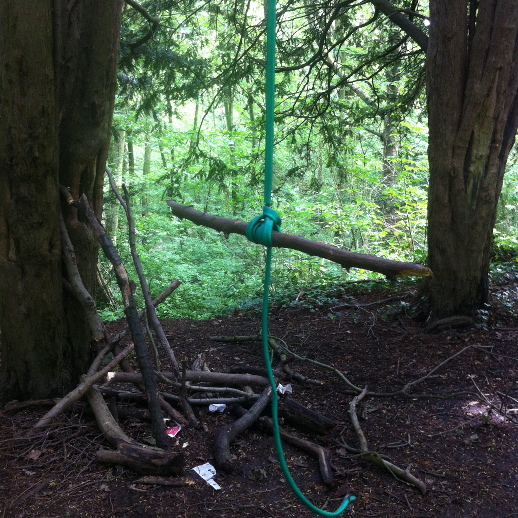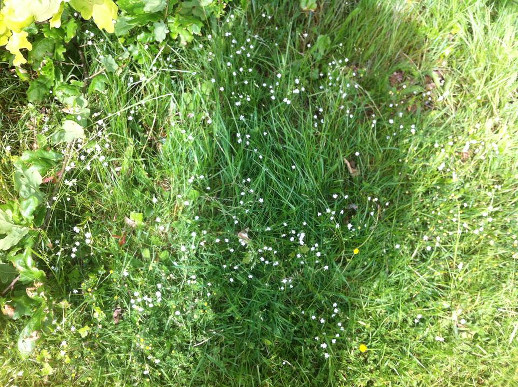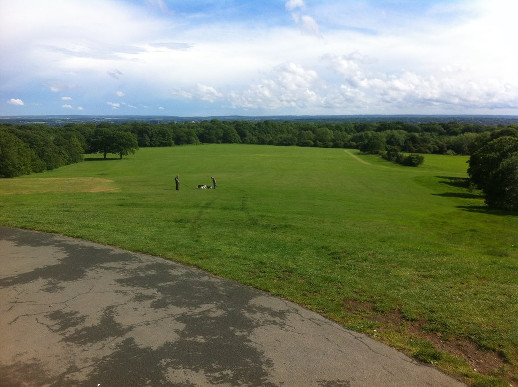By Emma Warren.
The trees are bulging out onto the right hand side of Shooter’s Hill Road, a continuous mass of clouded clumps that mark the current edge of this ancient woodland. It’s steep to cycle up here, pedaling away like a cartoon vertical.
This hill is pure, brutal geology in action.
Freewheeling down the other side, the green blurs past. I’m heading to Woodlands Farm, a place which has had various incarnations as pig farm, ‘90s squat and now as a working farm and charity. At the far edge of the smallholding, which sits opposite Oxleas’ south eastern corner, is a separated triangle of its original tread known as Clothworker’s Woods.
I reach the farm just as it’s closing, so I wheel my bike around and cross Shooter’s Hill into the woods. I’m disappointed, though. The woods were owned by the local clothworkers’ union and it’s a tiny, island of arboreal and social history which is rumoured to contain mature Wild Service trees and feral plums. Ah well, next time.
Cycling through Oxleas gives a new perspective. I travel at bike speed past a brand new rope swing hanging flat over a small, geological table where a few tiny bleachings of sun push through the canopy to spotlight the floor. I sail past a rowan splattered with custardy hair clips and think of Sylvain Tesson’s observation that learning to recognise the natural world is akin to the thrill of seeing a celebrity. Instead of oooh, Madonna! it’s oooh, black poplar!
Emerging from the woods onto the meadow in front of the caff, there’s a pretty salting of stitchwort in the long grass. Late spring is a colourful, peppery time, new pinks and purples breaking through the green and brown almost hourly, like something out of a Frank O’Hara poem.
A rainy few days day later and Conrad Ellam is looking out of the café window. He’s a local ecologist who has been involved with Oxleas since the 1990s. He’s drawing his finger across the air to describe the flight path of birds of prey he’s seen surfing the air currents in this open space, this absence in the middle of the woods.
He’s seen kestrels, sparrowhawk, hobby, red kite and buzzard in the last few years. These, birds, he says, are becoming more common, because of lack of persecution and because we no longer kill them with DDT. “I saw my first peregrine falcon in Wales in the 1970s. They were so rare, I felt really privileged to see it,” he says. “Now they’re becoming quite common. I saw a pair this morning, on the Citibank building in Lewisham. They’re not nesting there, but they’re resident.”
There’s a guy whose house backs on to Jack Wood who’s been reporting hearing tawny and little owl calls in the woods. “I think it’s like the peregrines,” says Ellam. “Some species, like owls, are becoming more urbanised. Even badgers. I found a badger sett in woods near Sidcup.” There was a nightingale heard on Woolwich Common this week, he adds, before heading back to the bus stop. But it was just passing through.
Up at the caff it’s nearly closing time. Chairs are on tables. There’s a man with two collies out on the meadow. Someone on a bike emerges inch by slow inch up the incline that takes you down to Jack Wood. A school kid in a blazer lopes into view, alone, at the bottom of the field. All of life is here, including a woman in a bright red jumper emblazoned with the knitted text legend MERRY CHRISTMAS.



